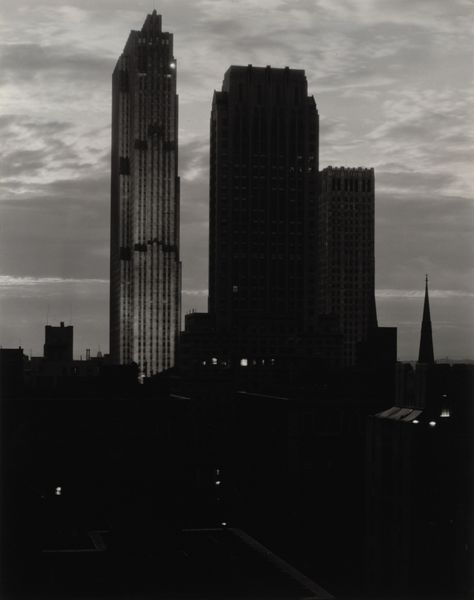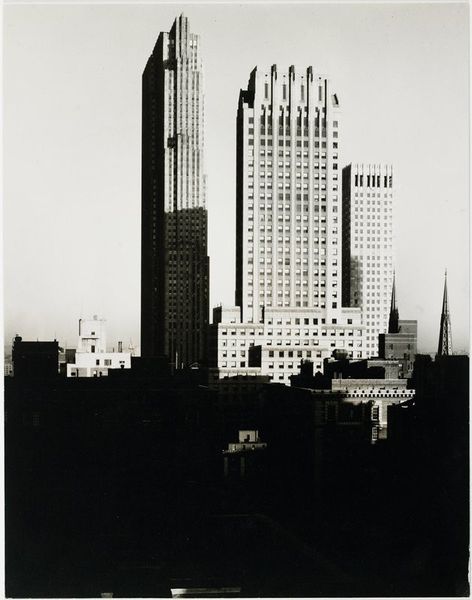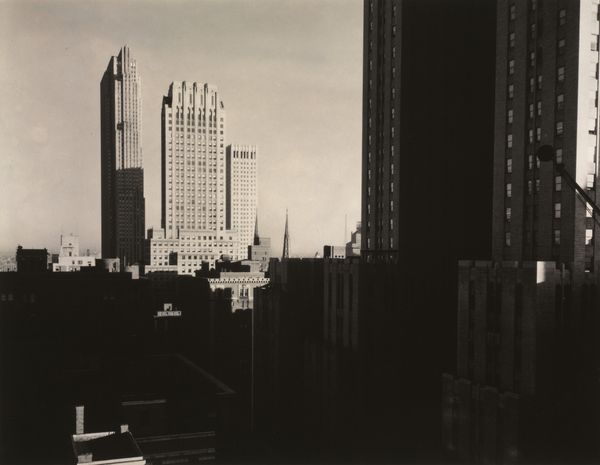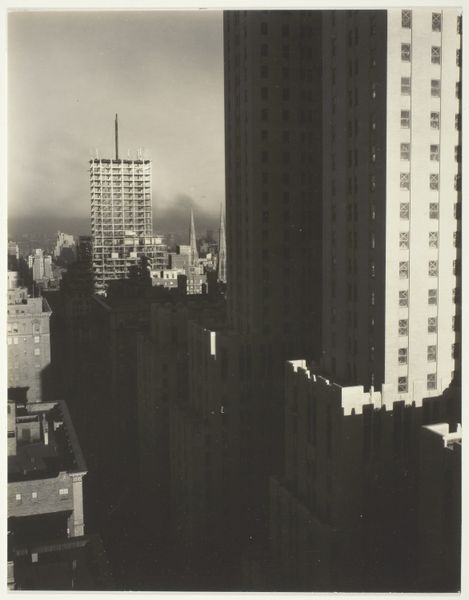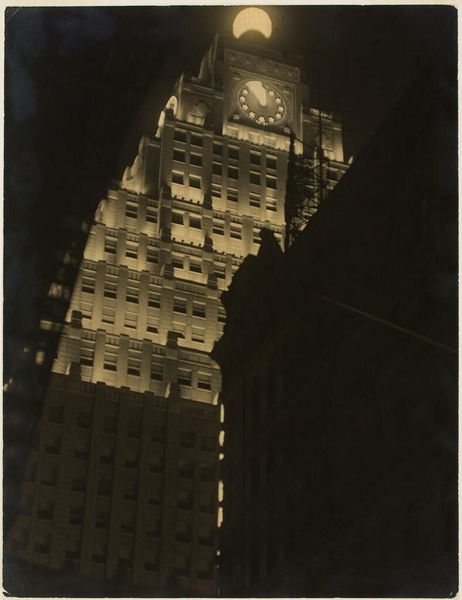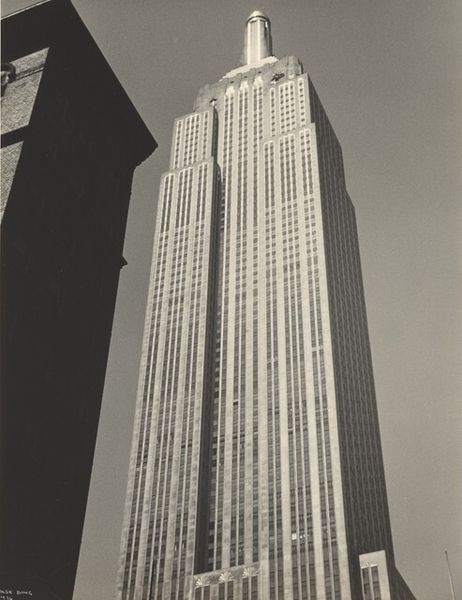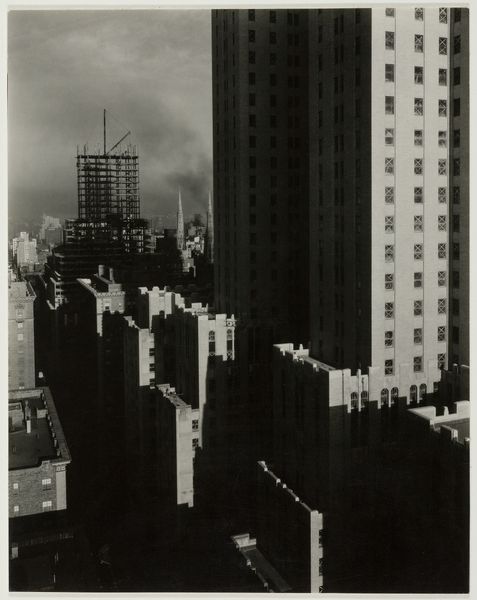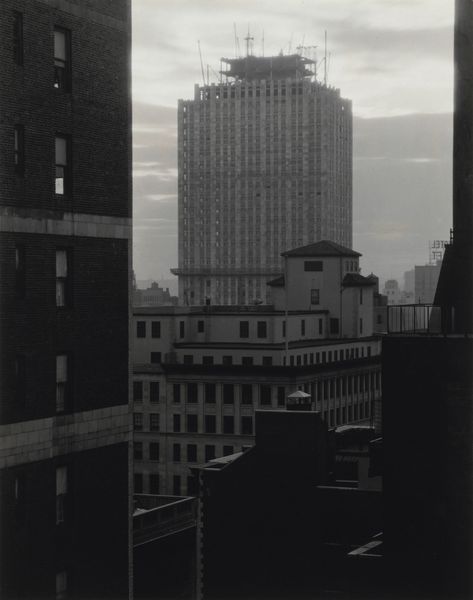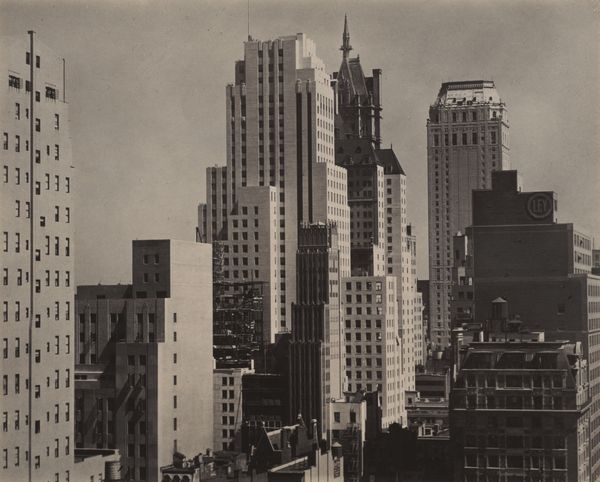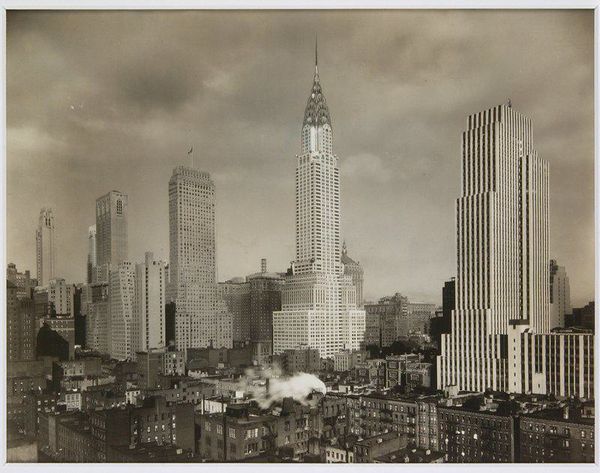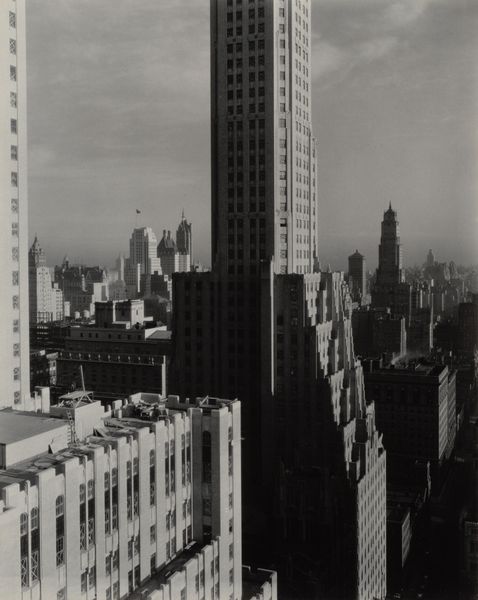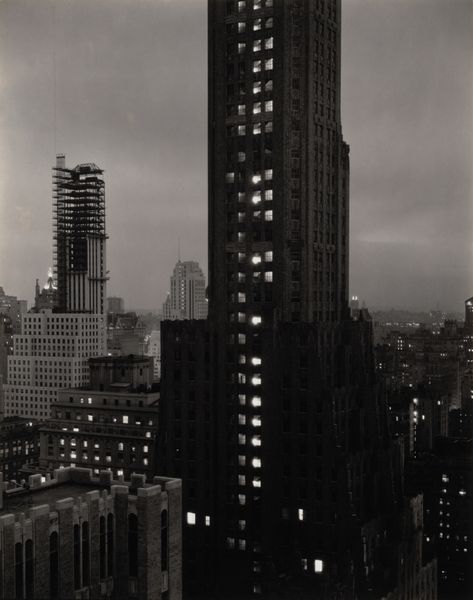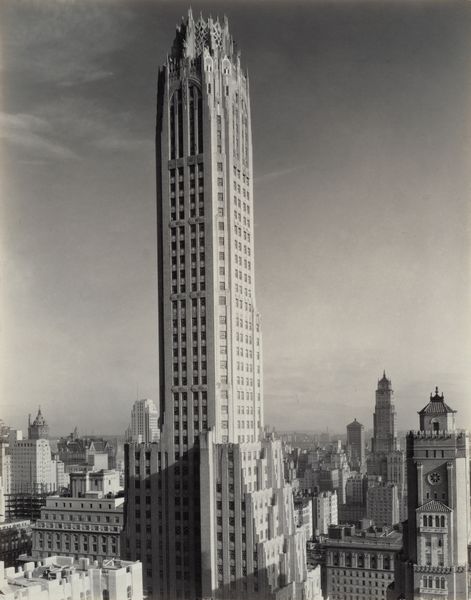
paper, photography, gelatin-silver-print
#
precisionism
#
paper
#
photography
#
gelatin-silver-print
#
monochrome photography
#
cityscape
#
modernism
#
monochrome
Dimensions: 24.2 × 19.3 cm (image/paper/first mount); 52.8 × 39.5 cm (second mount)
Copyright: Public Domain
Curator: Alfred Stieglitz's gelatin-silver print, "New York from the Shelton," created in 1935, presents a fascinating cityscape. What strikes you immediately about it? Editor: The brooding silhouettes against the soft sky; it feels simultaneously imposing and melancholic. There's this powerful verticality countered by a pervading darkness that almost feels like a sigh. Curator: Precisely. Stieglitz, deeply involved in promoting modern art and photography, was equally engaged in discussions around urbanism and its influence. Here we have a rather dramatic vision. It was taken from the Shelton Hotel, where he and his wife, Georgia O'Keeffe, lived for some time. Editor: I am curious about the selection of that vantage point. Visually, the buildings emerge like totems. Look how the lit skyscraper commands attention; the others seem to fall away toward the night. Is he playing with a specific symbolism here? The "new" versus the "old" perhaps? The radiant future juxtaposed with the fading past? Curator: Certainly, that interpretation holds weight. Stieglitz used photography to express emotional and intellectual responses to the world, he advocated that photographers capture the spirit of the age. You can see, in this composition, modern forms eclipsing, almost obscuring, the traditional church steeple. It speaks volumes about shifting powers and cultural values during the interwar period. Editor: And there's such a palpable sense of ambition inherent in these towers; humankind aspiring ever-higher! This resonates through time; cities continue to be potent symbols of both progress and our complex relationship to nature. Curator: Absolutely. Stieglitz championed photography as a high art, and works like this showcase his mastery in manipulating light and shadow to convey nuanced narratives. This print not only captures a specific moment in New York's history, but also encapsulates universal themes of change and human aspiration. Editor: Indeed, its enduring resonance speaks to the strength of visual language to embody our collective psyche. Seeing it now offers insight into how we perceive not only our past, but the future too.
Comments
No comments
Be the first to comment and join the conversation on the ultimate creative platform.
